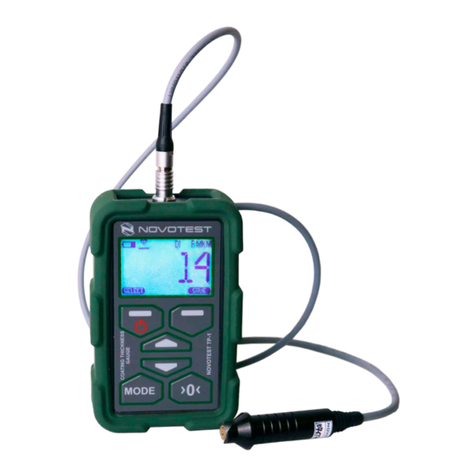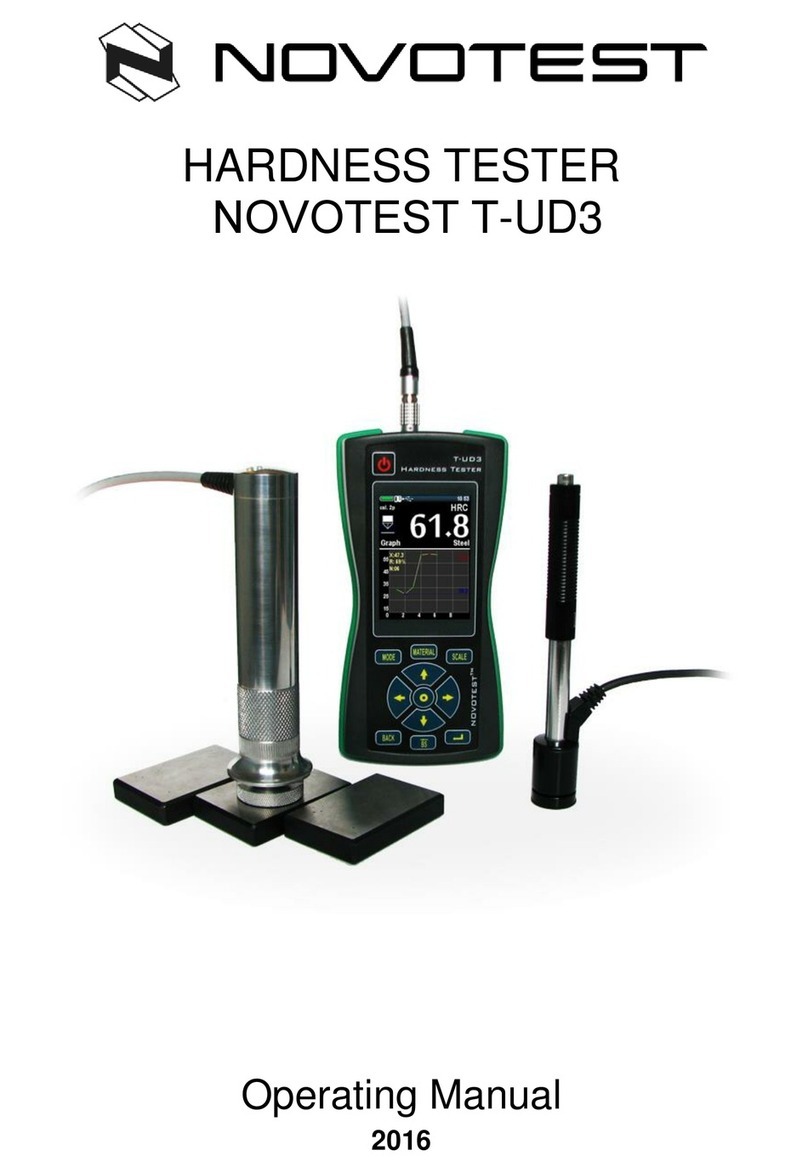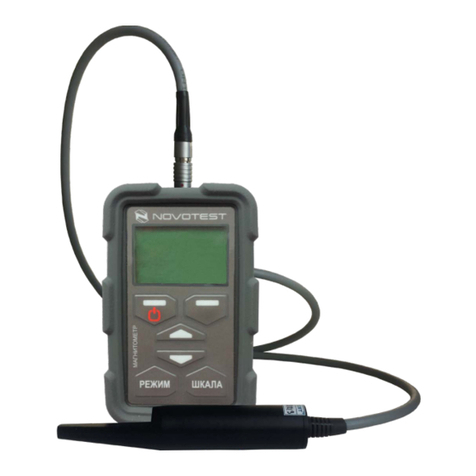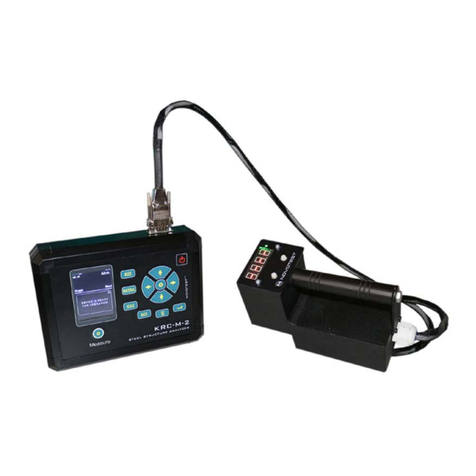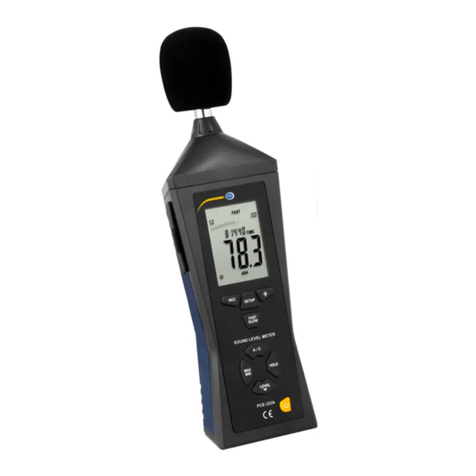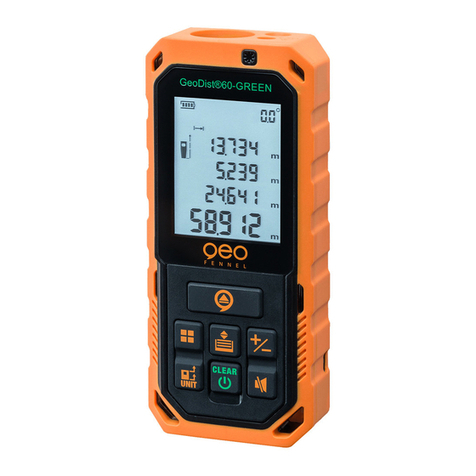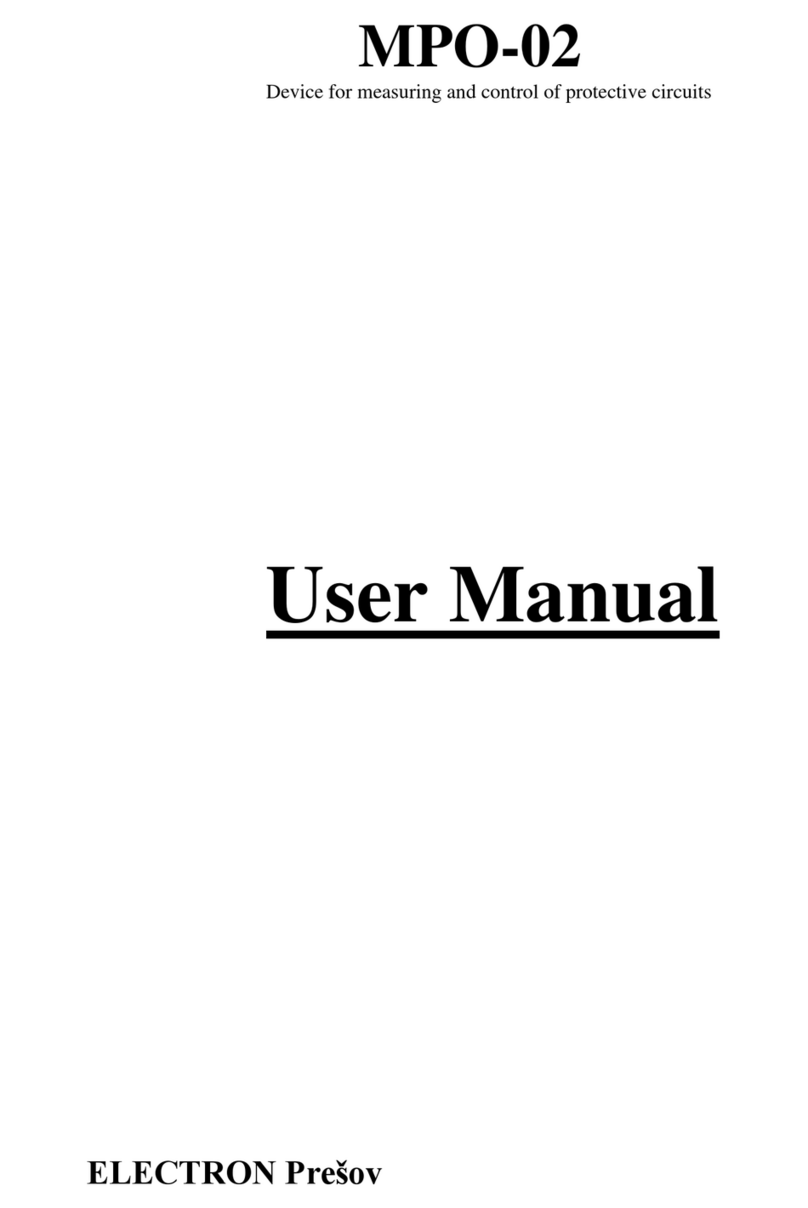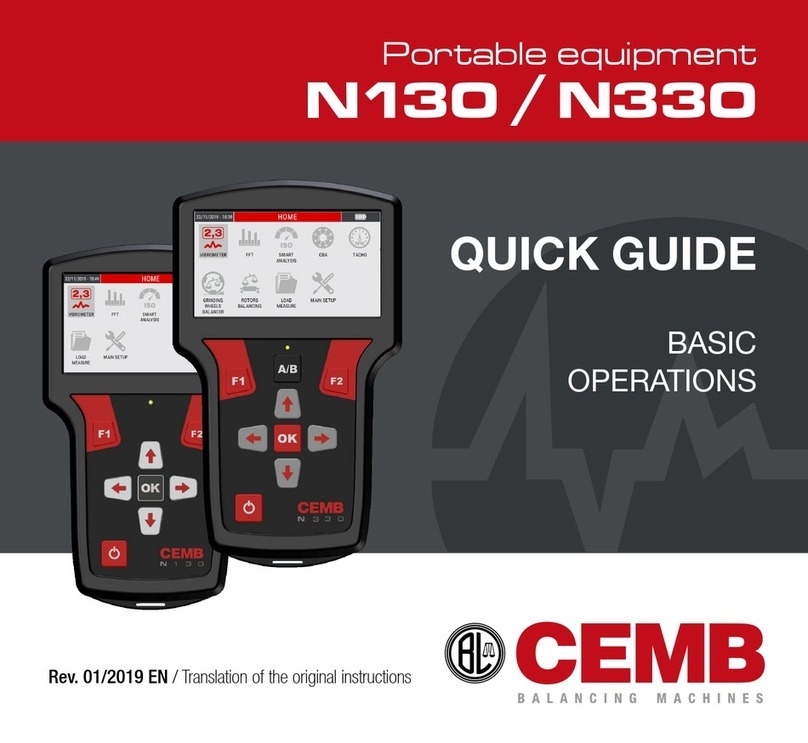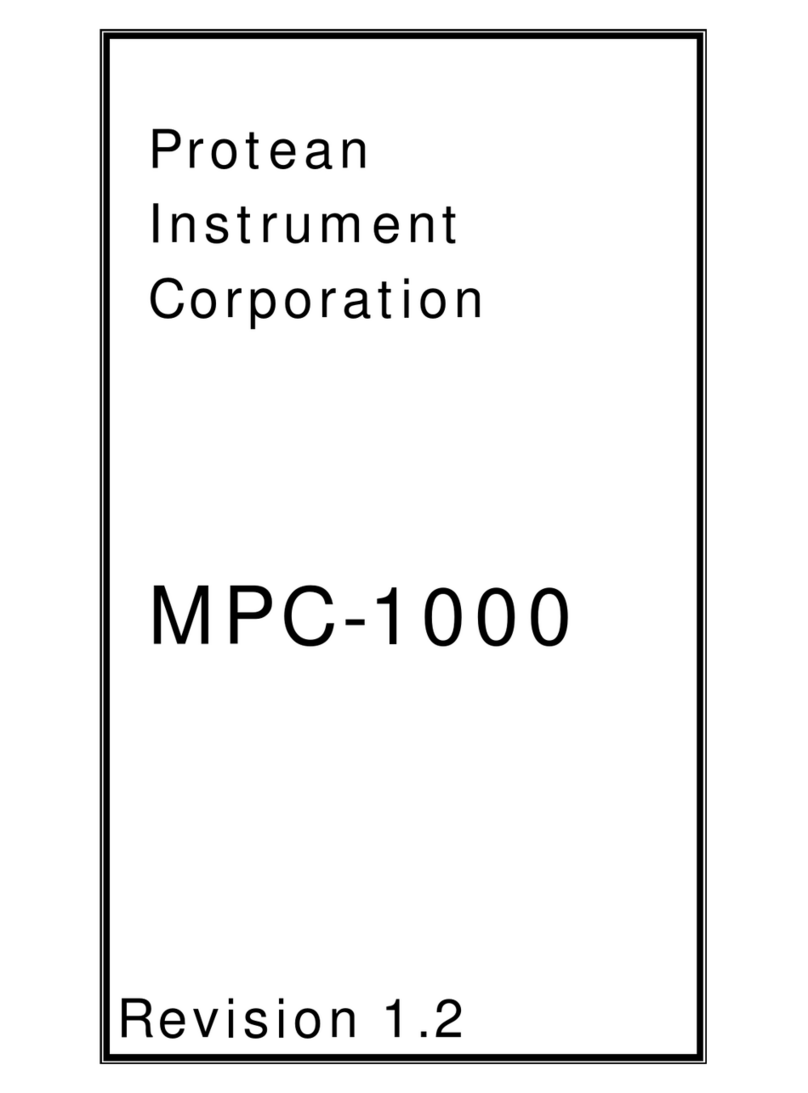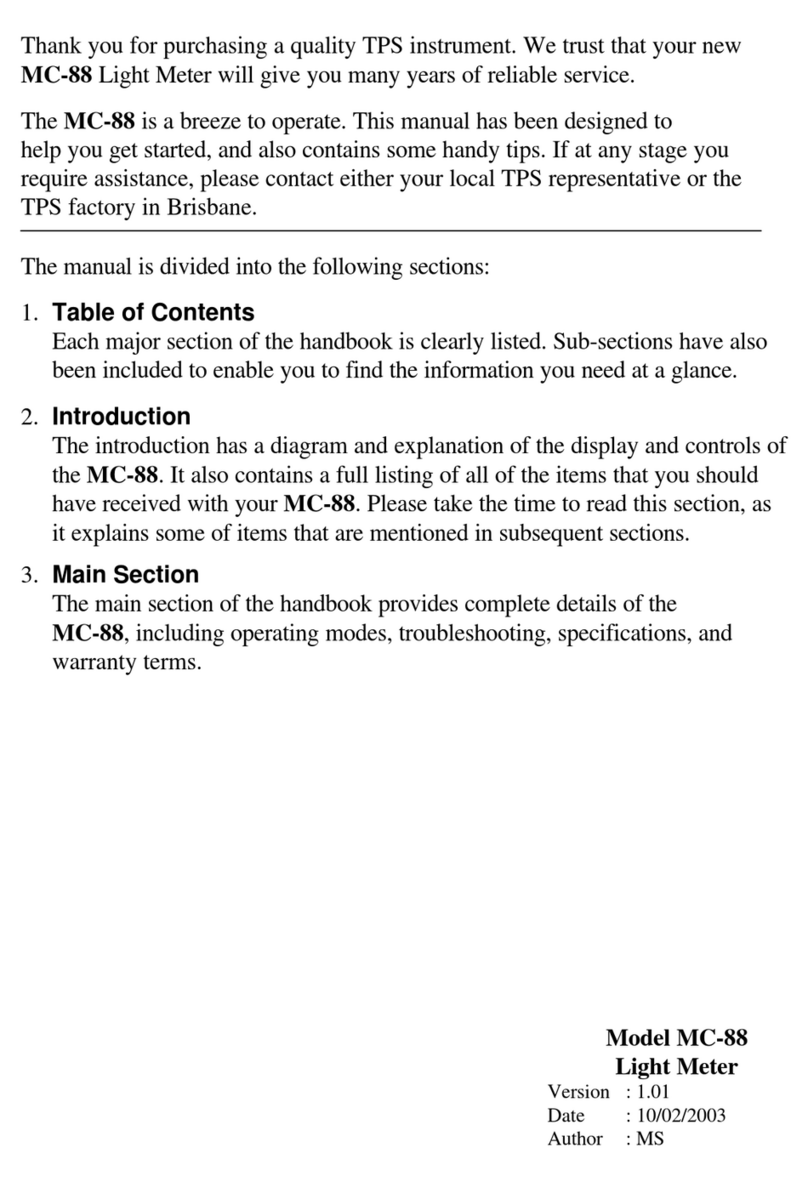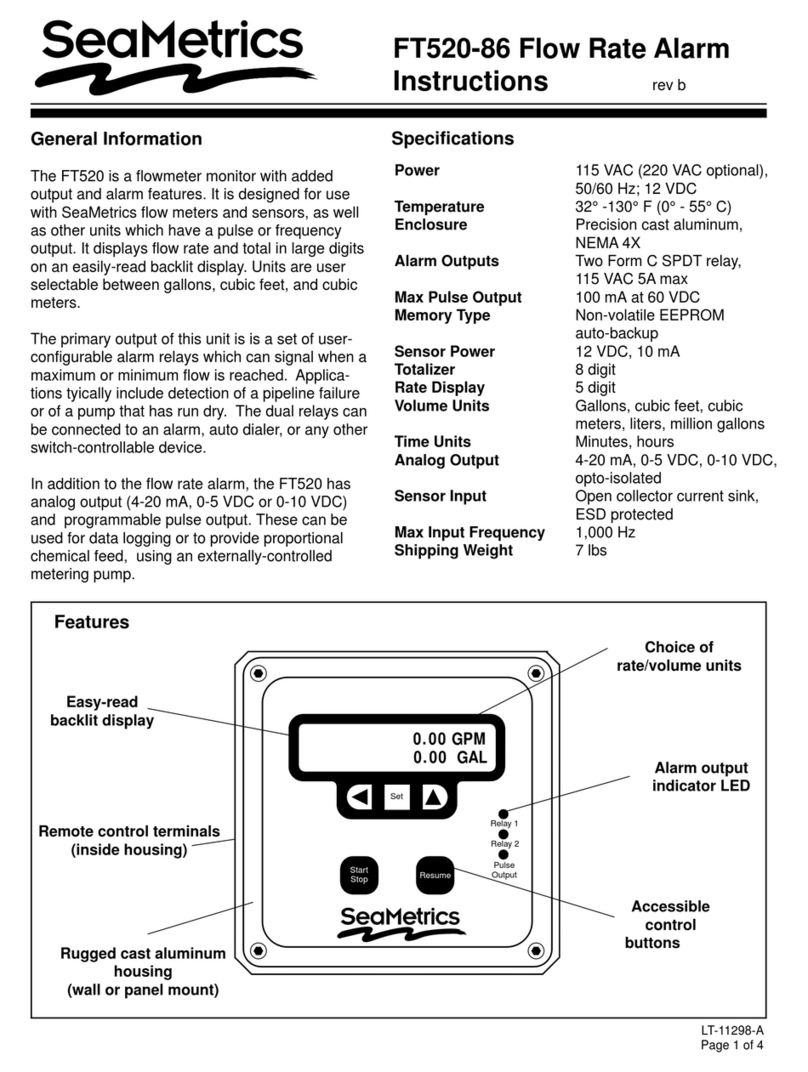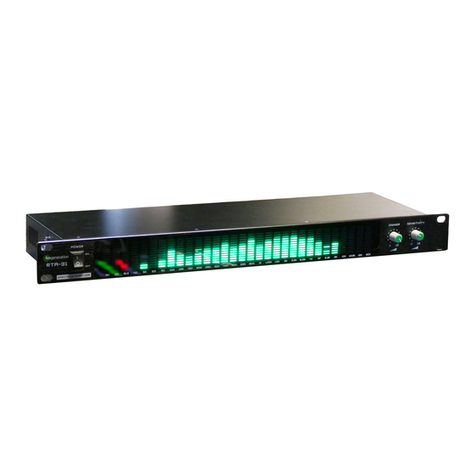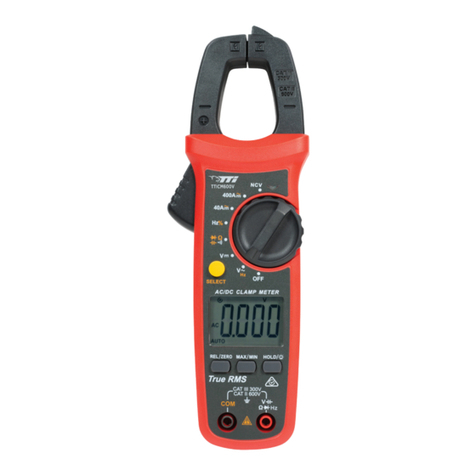NOVOTEST NVS P1 User manual

Паспорт
Виброметр NVS P3

СОДЕРЖАНИЕ
1 DESCRIPTION AND OPERATION OF THE DEVICE AND ITS COMPONENTS 4
1.1 The purpose of the device 4
1.2 Technical characteristics of the device 4
1.3 Standard delivery set 4
1.4 Parts 5
1.5 Marking and sealing 5
1.6 Packing 5
2 INTENDED USE 6
2.1 Operational limitations 6
2.2 Preparing the device for use 6
2.3 Using the device 6
2.3.1 Turning on 6
2.3.2 Measurement modes 6
2.3.3 Measurements 7
3 TECHNICAL MAINTENANCE OF THE PRODUCT AND ITS COMPONENTS 8
3.1 Safety measures 8
3.2 Warranty 8
3.3 Duties of the owner 8
4 MAINTENANCE 9
5 STORAGE 9
6 TRANSPORTATION 9
7 RECYCLING 9

Caution!
Please read this manual carefully before using the Vibration Meter Pen NOVOTEST NVS P1.
This operating manual (hereinafter O.M.) includes general information in order to give
the operating personnel understanding of functioning and operating rules of the Vibration
Meter Pen NOVOTEST NVS P1 (hereinafter referred to as the Vibration Meter Pen). The
document contains technical characteristics, description of the design and principle of
operation, as well as information necessary for the correct use of the device. Before starting
work, it is necessary to read this manual, as the device operation must be carried out by
persons who are familiar with the operation principle and the device design.
Correct and effective use of the hardness tester requires obligatory availability:
− Testing methods;
− Conditions for testing, according totesting methods;
− Trained, and familiar with this O.M. user.
The enterprise-manufacturer reserves the right to make non-critical changes, without
making worse technical characteristics of the device. These changes may not be mentioned in
the text of current document.
The standard delivery kit of the device includes the operational documentation as a part
of this O.M. and the Calibration Certificate.
The present O.M. applies to all modifications of the device.

1 DESCRIPTION AND OPERATION OF THE DEVICE AND ITS COMPONENTS
1.1 The purpose of the device
Vibration Meter Pen NVS P1 is used to study the vibration level of various mechanisms.
The vibration level can be judged by acceleration, speed and degree of displacement. The
Vibration Meter Pen is equipped with a built-in high-sensitivity vibration sensor in the form
of a probe. The Vibration Meter Pen transducer transmits analog information about
vibrations to the device; the Vibration Meter Pen electronics processes the received data and
displays them on the LCD display.
The Vibration Meter Pen is used to measure vibration according to the following
parameters:
− vibration velocity, mm / s;
− vibration displacement, mm;
− ratio of peak and root-mean-square values of vibration;
− vibration acceleration, mm / s2.
The device is equipped with an auto-off function - after 20 seconds of inactivity, the
Vibration Meter Pen will turn off automatically.
The device is powered by a built-in battery.
The instrument is widely used in petrochemical and machinery industries, metallurgy,
vehicles, etc.
1.2 Technical characteristics of the device
The main characteristics of the device are presented in table. 1.1.
Table 1.1 - Main characteristics of the device
Vibration acceleration (amplitude):
0.01 ÷ 50.0 m / s2
Vibration speed:
up to 35 mm / s (160 Hz)
Vibration displacement (span):
up to 563 mm / s (10 Hz)
Measured frequency range:
up to 100 microns (160 Hz)
Accuracy:
up to 5000 microns (10 Hz)
Duration of continuous work, h
10 ÷ 1000 Hz
Charge duration, h
± 5% (10 ÷ 1000 Hz)
Connector type
up to 8
Overall dimensions, mm
2.5
Degree of protection
USB - micro B USB 1.0 Receptacle Connector
Weight, g, no more
157 × 22 × 14
Mean time between failures - not less than 2.400 hours.
Average full service life is 5 years.
1.3 Standard delivery set
− Measuring unit 1 pc.
− Charger 1 pc.
− Packing 1 pc.
− Operating manual 1 pc.
− Calibration certificate 1 pc.

1.4 Parts
The design of the device includes an electronic unit with a vibration sensor connected to the
lower end surface of the device (Fig. 1.1). The control keys are located on the front panel,
which also houses the LCD.
2 3 4 5
1
1 - vibration sensor; 2 - Vibration Meter Pen body; 3 - "Modes" key; 4 - LCD display;
5 - key for switching on and measuring.
Fig 1.1 – Vibration Meter Pen NVS P1
1.5 Marking and sealing
The manufacturer's logo is applied to the front panel of the device.
Its serial number is printed on the back panel.
1.6 Packing
The device is delivered in a packing container to prevent damage during transportation.

2 INTENDED USE
2.1 Operational limitations
The operation of the device must be carried out under the conditions of influencing
factors and taking into account the parameters of the controlled objects in accordance with
the agreed technical characteristics, and the device must also be used within the framework
of its technical characteristics.
The user who is familiar with the operating documentation for this device is allowed to
work with the device.
After transporting the device to the place of operation at a negative ambient temperature
and bringing it into a room with a positive temperature, in order to avoid failure due to
moisture condensation, keep the product in the package for at least 2 hours.
During storage, the Vibration Meter Pen must be in a packing container, the battery
charge must be at least 50%.
2.2 Preparing the device for use
Carry out an external examination of the device, make sure that there are no mechanical
damages. If there is any dirt, wipe the display and the housing of the device with a clean
cloth.
Before using the device, make sure that there is sufficient charge in the Vibration Meter
Pen. When the low battery indicator appears, which is located on the right side of the display,
you need to connect the device to a PC using a USB cable or to a charger
Note - When using the Vibration Meter Pen for the first time, it is necessary to conduct an
external examination of the device and, without turning it on, recharge it until the charge indicator is
full by connecting it to a PC using a USB cable. The battery charge level is shown on the right side of
the display. After that, 2-3 complete charge and discharge cycles of the battery should be performed.
Prepare the surface of the controlled object, it should be as clean, smooth, and free of
contamination as possible.
2.3 Using the device
2.3.1 Turning on
The device is switched on by short-term pressing of the " " button, after which you
can select the required operating mode of the Vibration Meter Pen.
2.3.2 Measurement modes
Switching between modes is carried out by pressing the " " key. The device operates
in the following modes: vibration acceleration measurement mode (m / s2); vibration speed
measurement mode (mm / s); vibration displacement measurement mode (mm); mode of the
ratio of peak acceleration and vibration speed.
Vibration acceleration measurement mode
Acceleration measurement is especially useful for localizing high frequency vibrations
and is therefore suitable for detecting faults in bearings and gearboxes. Acceleration is
measured in m / s².
Vibration velocity measurement mode

Velocity is the most commonly used parameter and is used to measure vibration in
accordance with ISO 2372, BS 4675, VDI 2056 and ISO 10816. Velocity is measured in mm / s.
Vibration displacement measurement mode
Due to its good low frequency response, this parameter is usually used in low speed
applications. The unit for this parameter is mm.
2.3.3 Measurements
Switch on the device and set the operating mode by pressing the " " key several
times until the desired mode is displayed. The modes are set in the following order:
"acceleration" (m / s2) - "speed" (mm / s) - "displacement" (mm) - "ratio of peak and
root-mean-square vibration values".
Place the Vibration Meter Pen on the object of measurement and press it perpendicularly
to the surface of the product with a force of 2 to 5 kg, ensuring reliable contact of the sensor
with the object, press and hold the " " key - the device will start measuring vibration.
The measurement result is displayed on the LCD.
During of measuring vibration, the device makes cyclic measurements at intervals of one
second. The vibration value is shown on the display until the end of the next measurement.
For more accurate measurement results, it is recommended to measure two or three times. If
the readings are unstable, check that the force is applied and the instrument is positioned
correctly.
When machines (mechanisms) are operating under the same conditions, you can use a
Vibration Meter Pen to carry out comparative measurements. By analyzing the data obtained,
it is possible to detect possible malfunctions of individual machines at an early stage. To
achieve high accuracy with the instrument, you must make sure that these measurements are
always taken at the same points.
Note - The device uses the power saving mode. If the device is left on, it will turn off automatically
after 20 seconds.

3 TECHNICAL MAINTENANCE OF THE PRODUCT AND ITS COMPONENTS
3.1 Safety measures
After putting into operation it is recommended to inspect the device periodically in order
to control:
− operability;
− compliance with the operating conditions;
− battery charge level;
− absence of external damages to component device parts.
When working with a charger connected to the 220-volt system at 50 Hz, the
requirements set out in the “Safety rules for the operation of electrical installations of
consumers” are mandatory.
To work with the device are allowed those who have been instructed and certified for
certain qualification group for safety in working with electro-radio measuring devices.
3.2 Warranty
The following warranty information is valid for all NOVOTEST products.
The manufacturer guarantees the conformity of the device to the requirements of the
technical conditions under the user's compliance with the conditions of transportation,
storage and operation, and timely maintenance at the manufacturer's premises at least once a
year.
3.3 Duties of the owner
The Instruction Manual contains information on the correct use and maintenance of your
instrument.
Correct use and maintenance of the instrument will help you avoid costly repairs caused
by incorrect operation, neglect or improper maintenance. In addition, following our
recommendations will increase the service life of the device.
− In the event of a defect or malfunction, return your device to the manufacturer or
an authorized dealer as soon as possible for warranty repairs. This will help
minimize the repairs required to your appliance.
− Clean the casing of the product regularly according to the recommendations.
− Observe the conditions of use and storage of products in accordance with the
recommendations.

4 MAINTENANCE
The device by type of performance and taking into account operating conditions refers to
products that are repaired at special enterprises or at the manufacturer.
To set the device for warranty service in the service center (SC), it is necessary to present
correctly completed SERVICE AND MAINTENANCE RECORDS for the device. SC makes a
mark in the SERVICE AND MAINTENANCE RECORDS about setting the device for
warranty service and sends a photocopy to the manufacturer.
Sending the device for warranty (post-warranty) repair or verification should be done
with the O.M. or SERVICE AND MAINTENANCE RECORDS of the device. In the
accompanying documents it is necessary to indicate the mailing details, telephone and fax of
the sender, as well as the way and the address of the return delivery.
Warranty repair is carried out in the presence of a completed SERVICE AND
MAINTENANCE RECORDS.
5 STORAGE
Storage conditions for the device in group 1 in accordance with the requirements of
GOST 15150 at an ambient temperature of +5 ° C to +40 ° C and a relative humidity of up to
80% at a temperature of 25 ° C.
Recommended temperature for long-term storage is 10 ° C - 30 ° C.
For short-term storage and between use, the device should be stored in the intended
packaging.
The storage area should be free from vapors of aggressive substances (acids, alkalis)
and direct sunlight. The device must not be subjected to sharp shocks, drops or strong
vibrations.
6 TRANSPORTATION
Packaged devices can be transported by any means of transport, subject to the
following conditions:
− transportation is carried out in the original container;
− there is no direct exposure to moisture;
− the temperature does not go beyond the range from -50 ° С to +50 ° С;
− humidity does not exceed 95% at temperatures up to 35 ° С;
− vibration in the range from 10 to 500 Hz with amplitude up to 0.35 mm and
acceleration up to 49 m / s2;
− impacts with a peak acceleration value of up to 98 m / s2;
− the devices placed in the transport are secured to prevent falls and impacts.
−
To prevent moisture condensation inside the device when it is carried from frost to a
warm room, it is necessary to keep the device for 6 hours at room temperature before use.
7 RECYCLING
The product does not contain hazardous or toxic substances that can harm human health
or the environment and does not pose a danger to life, human health and the environment at
the end of its service life. In this regard, the disposal of the product can be carried out in
accordance with the rules for the disposal of general industrial waste.
Table of contents
Other NOVOTEST Measuring Instrument manuals
Popular Measuring Instrument manuals by other brands
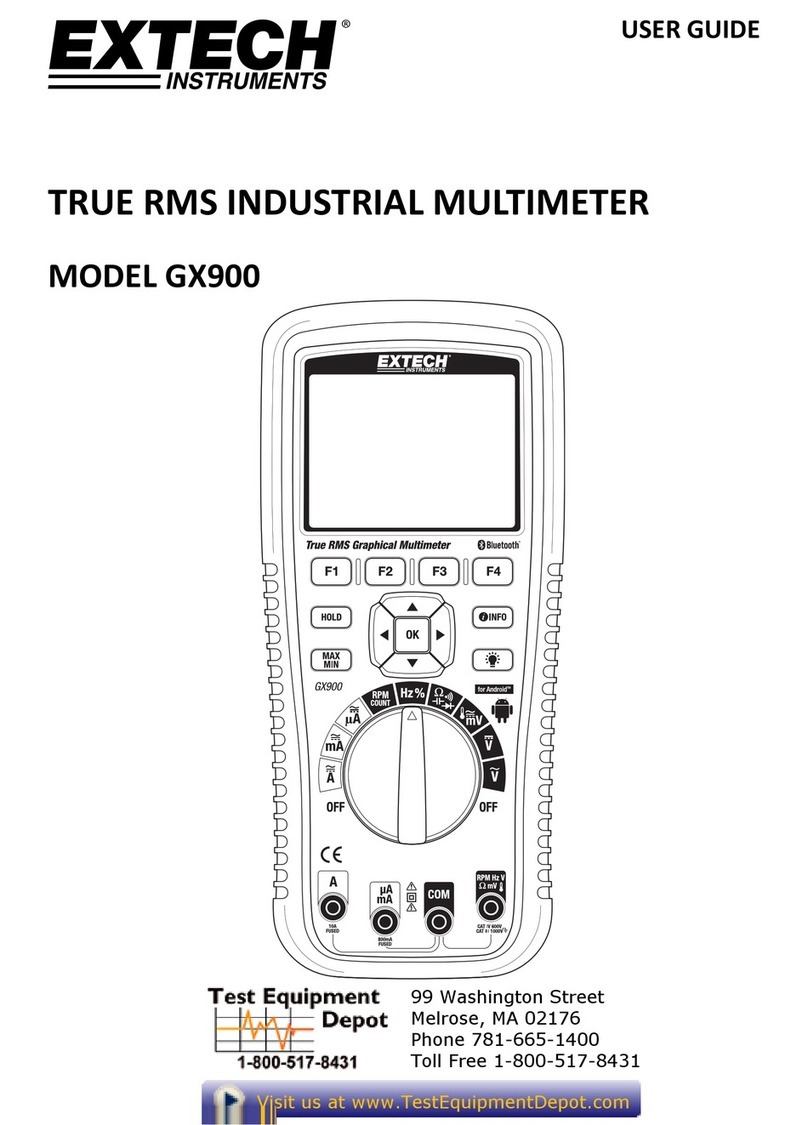
Extech Instruments
Extech Instruments GX900 user guide
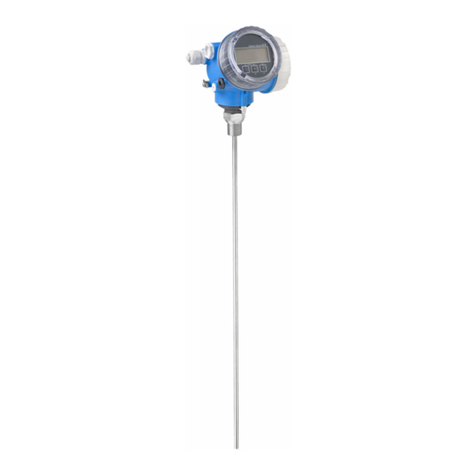
Endress+Hauser
Endress+Hauser FOUNDATION Fieldbus Levelflex FMP50 Brief operating instructions

RADWAG
RADWAG PUE H315 quick start
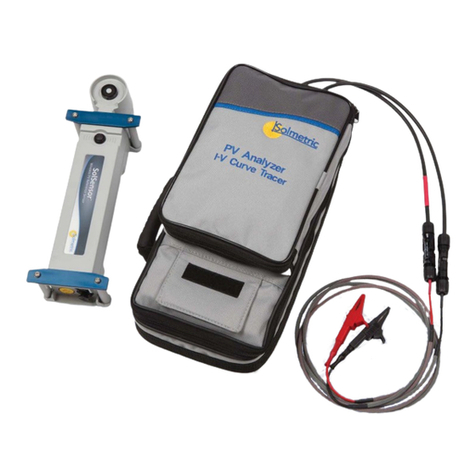
Solmetric
Solmetric PVA-1500T user guide
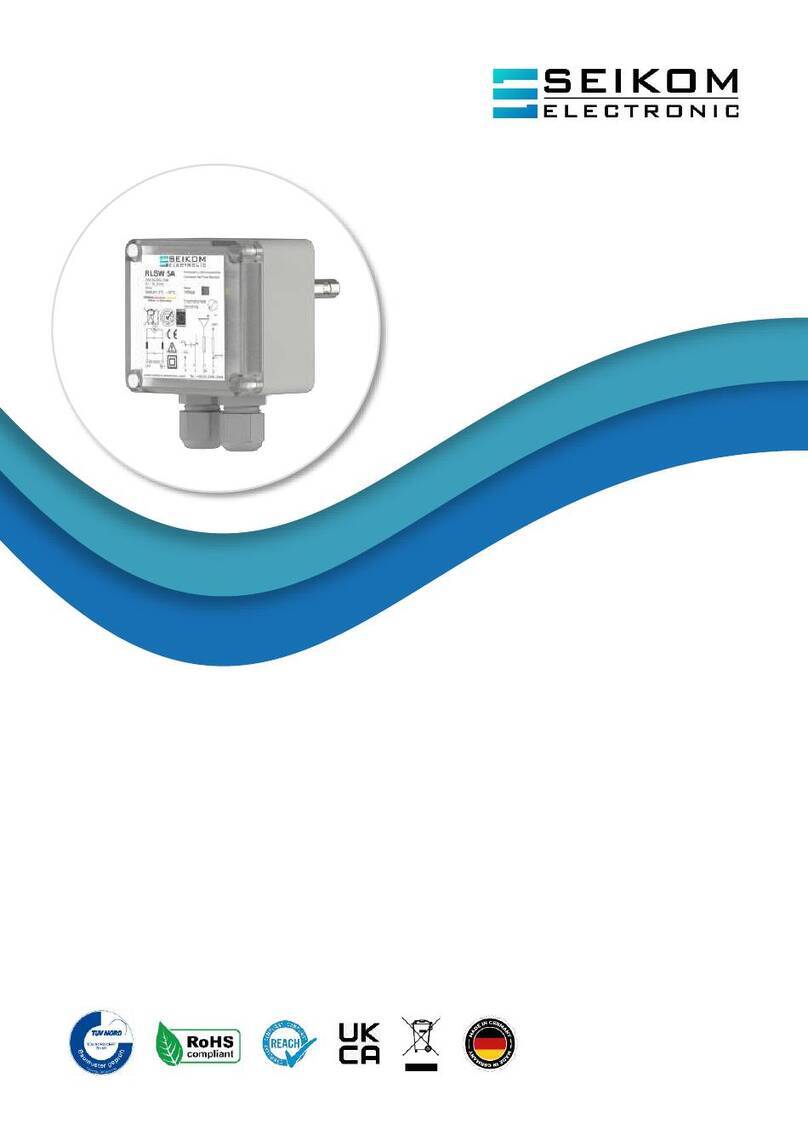
Seikom Electronic
Seikom Electronic RLSW 5A user manual
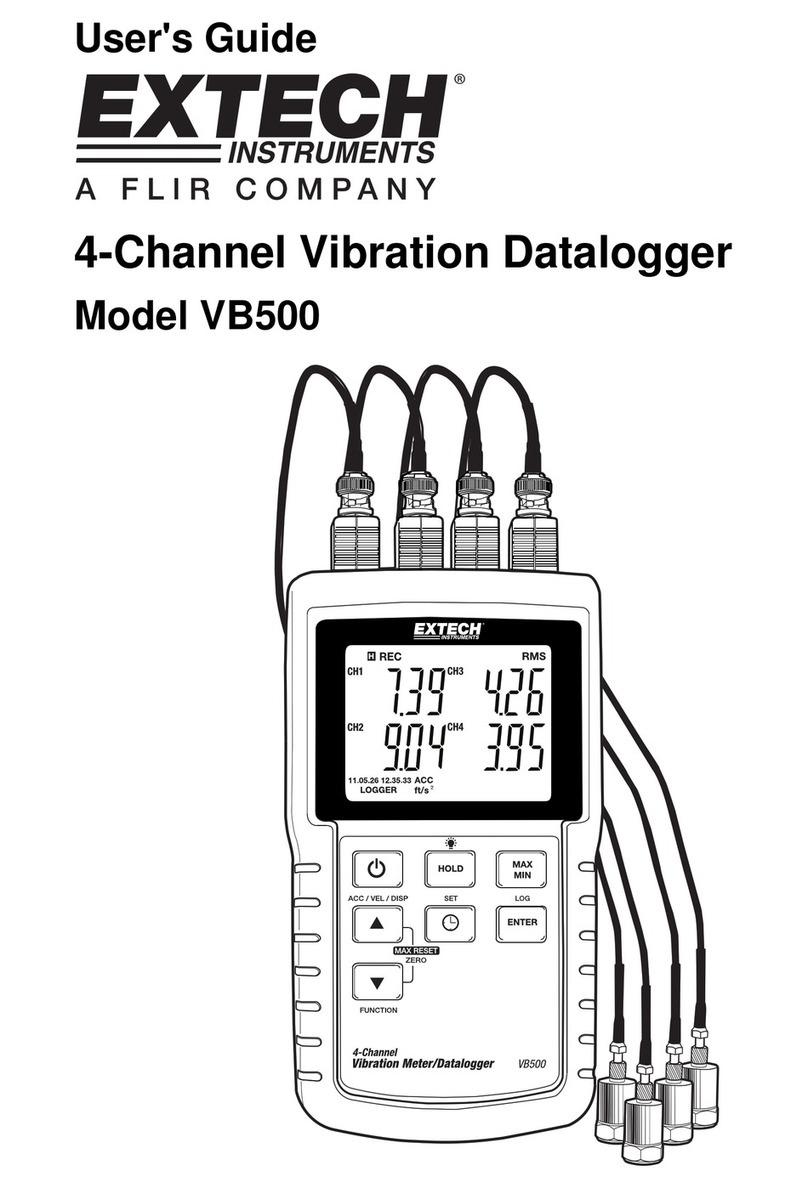
Extech Instruments
Extech Instruments VB500 user guide
